Red foxes: how to protect your chickens.
Facts about the fox that can help you take 8 steps to protect your flock.
There's no doubt about it: vulpes vulpes, the red fox, in its prime is beautiful. Easily recognised by its orangey-red coat and bushy tail (the "brush"), it's commonly found right across the northern, and parts of the southern, hemisphere.
Unfortunately for backyard poultry keepers, it's also one of the main super-predators of chickens.
So is it possible to co-exist with foxes, even with a flock of chickens?
I'd say yes - and I do, despite having woodland inhabited by red foxes surrounding my chicken run.
How? When the whole of my first flock was killed by a fox, I decided to learn as much about them as possible, so I could work out what steps to take to protect my next set of chickens.
I haven't had a chicken killed by a fox since.
This article shares that knowledge with you, so that you can do the same.
If you want to skip straight to the section about how to protect your flock, click here - but you'll be missing out on some critical information, including how to hear when a fox is close by.
Fox Facts: how to tell when you have a fox family nearby.
Fox sounds.
The simplest way to know whether you have foxes nearby is listening for their call sounds. Tip - don't play these if your dog is nearby!
The male (dog) fox makes a "bow" barking sound...
while youngsters make more of a "mewing" sound, not unlike a cat.
Where do foxes live?
It's important to be able to spot a red fox's habitat so you know whether you have them in your area. They're one of the most resourceful animals - unfairly often referred to as "sly" or "cunning" - and have learned to adapt to a number of very different habitats.
So you'll find them in woodland and urban areas, which is where they're best known. But they also make their homes on cliffs, salt marshes and peat bogs - wherever there's a ready supply of food.
Called an "earth" or a "den", their home is a series of burrows, most commonly found under tree trunks. In urban areas, you'll often find them underneath sheds.
You can recognise the entrance as a fairly large hole.
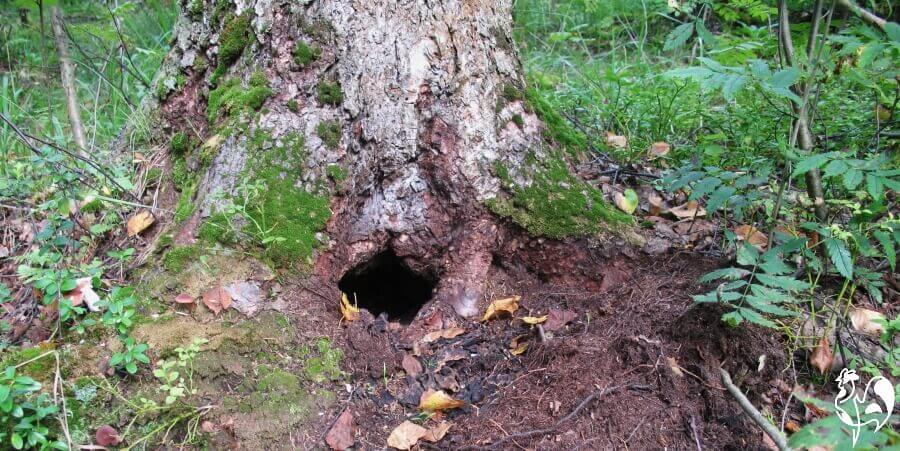 A typical entrance to a fox's earth.
A typical entrance to a fox's earth.They tend to spray the entrance with their scent so as to be able easily to find it again. If you have a dog, she'll recognise the scent easily.
It's important to note that foxes burrow. They're experts at it - it's how they make their home. So burrowing under your chicken run is no problem for them, unless you take steps to prevent it.
Fox scat - another tell-tale sign.
Foxes use their poo - called scat - to mark their territory, so it's easy to see. Keep a look out for it on top of grass, around the perimeter of your chicken run, along roadsides.
In urban settings you'll find it even on patios, porches and garden furniture.
It's very easy to tell fox scat from dog droppings.
It's typically almost black in colour in rural areas. Where foxes are living close to humans, it will be lighter due to them eating domestic waste. It's around three to five inches long and pointed at the end.
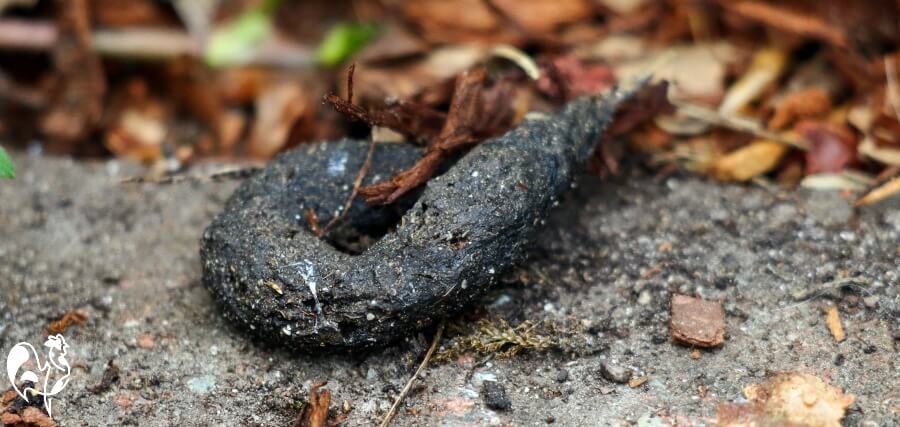 Fox scat will contain bits of whatever the fox is eating, and smells strongly.
Fox scat will contain bits of whatever the fox is eating, and smells strongly.You'll see it contains tiny undigested bits of whatever they're eating, whether that's berries or bones, fur or feathers. And it smells very strongly and unmistakably of fox.
Red fox facts: what do foxes eat?
This is entirely dependent on where they live. Most people think of foxes as meat eaters but in fact they're omnivores, and will eat whatever's available.
In the country, they'll survive on berries and fruit if they have to, but they're also ace hunters of small mammals, including rabbits, hares, squirrels, frogs, rodents and snakes. They will, of course, enjoy your chickens if they can.
In urban settings they've learned to scavenge in dustbins or recycling bins for discarded food. They've also learned that some householders will feed them, and they'll appear at the same time every day for their food.
So wherever you live, make no mistake - your chickens will be on a red fox's menu.
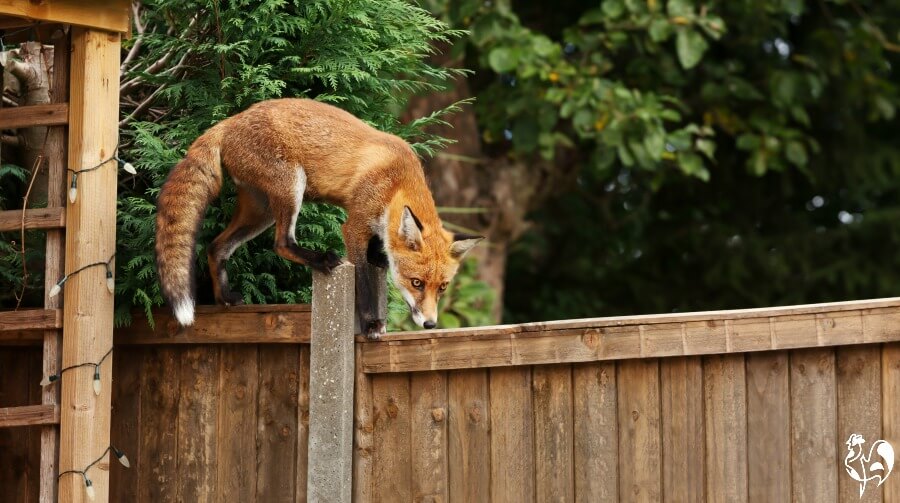 Foxes in urban areas now have few inhibitions and will look for food day or night.
Foxes in urban areas now have few inhibitions and will look for food day or night.How to tell if it was a fox who took your chickens? You'll find a pile of feathers, but no body. The fox will always take their prey back to their den.
Facts about foxes: feeding the baby fox.
 Baby foxes, called kits, look cute - but they need to be fed.
Baby foxes, called kits, look cute - but they need to be fed.The fox baby, called a "kit" or a "cub", is born blind and entirely dependent on its parents. While the vixen will remain in the den until the baby is old enough to venture outside at about five weeks, the male will hunt and bring food back to the den.
Litters can be as large as 13, and even a "small" litter will range from 4 to 6 kits. That's a lot of mouths to feed. By the time is baby is ten weeks, it's fully weaned and able to start hunting for itself.
This birth and growth season is active between late February and mid-May, with April being the optimum time. It's then that your chickens are most at risk.
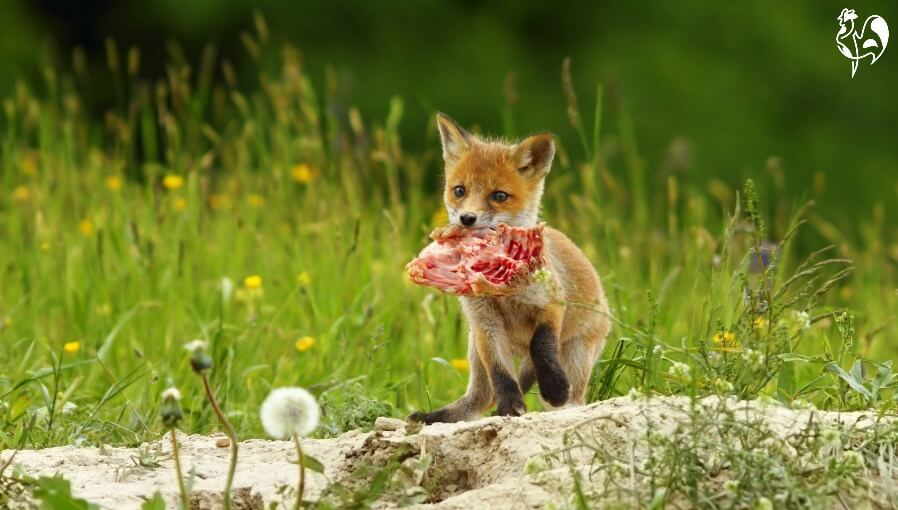 A baby fox is weaned and wanting meat by ten weeks old.
A baby fox is weaned and wanting meat by ten weeks old.How the red fox finds chickens.
The red fox and its senses.
The fox is known to hunt mainly through a combination of hearing, which is its most acute sense, and, to a lesser extent, vision(1, 2).
Their ears are able to move independently, so they are able to pinpoint the position of sounds virtually exactly. They're particularly able to pick up low frequency sounds like rustling, so chickens rootling through straw or leaves will be picked up immediately.
Smell is, surprisingly, not as well developed as some other mammals although still thought to be fairly acute, used to detect both their own and other foxes' territories.
The red fox's sight is the least important of these three senses. Studies(2) have shown they're actually quite short-sighted.

They are naturally nocturnal animals, and their sight developed to be able to see more clearly at night.
The fact that they now also hunt by day means they depend on being able to see movement, rather than specific shapes, until they're quite close to their prey.
The fox and movement.
Young foxes are able to move at speeds of up to 48 kilometres per hour (about 30 mph). The speed at which they jump on their prey is much faster than your chickens can ever hope to move.
Foxes climb.
Although foxes prefer to live underground, they will if necessary live above. Unlike other members of the dog family, they've adapted to become good climbers, using their hooked claws to climb fences and trees.
Together with an ability to jump heights of over a metre (more than three feet) this means that using their claws, red foxes are able to climb fences of six feet or more.
So as well as being able to catch chickens by burrowing, they're able to attack from above by climbing.
How to protect your chickens from the red fox.
Using all this information about the fox, it's not hard to come to conclusions about how best our chickens can be protected from them.
For me, killing is not an option, nor is re-homing - the territory will simply be taken over by another fox.
The fox is a resourceful animal, who just needs to put a square meal on the table. But there are ways of preventing that meal being our chickens.
1. Keep a lookout for the tell-tale signs and sounds of foxes nearby. That way you'll always be alert to potential danger.
2. Be particularly alert from early April to mid May, when fox cubs need to be fed.
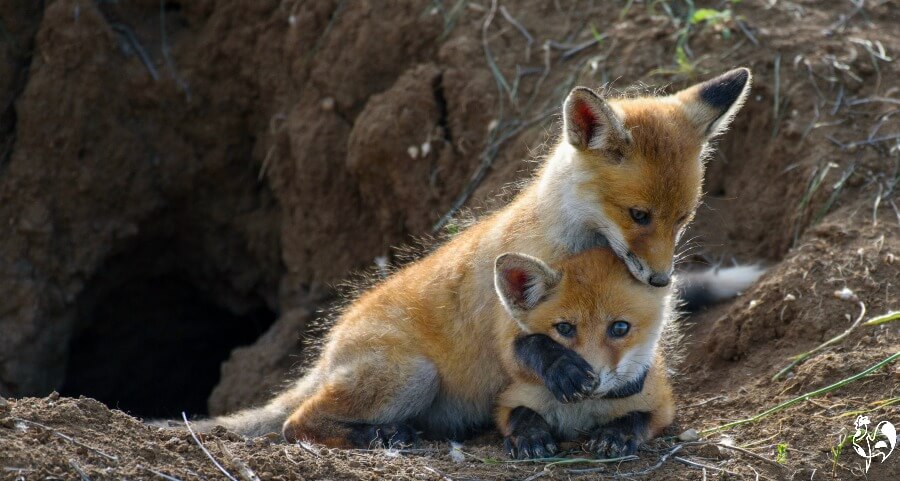
3. Free range: understanding the potential danger. Foxes can hear free range chickens at a distance of a mile or more. Only free range if you can accept that your chickens won't be able to move quickly enough to withstand a fox attack.
4. Use strong, chain-link fencing for your chicken run and bury it at least 18" underground. Add an "L" shaped panel of mesh attached to the bottom of the fence, a couple of inches below ground. Cover it with earth. Using both these methods together will to stop foxes burrowing beneath the fence.
5. See my detailed article about the different ways of fencing your run, whether large or small.
6. If you're in an urban area and have neighbours who like to treat foxes as a pet, ask them not to. Or, at the very least, ask them to feed the fox by night, after your flock has roosted.
7. Consider getting a Livestock Guardian Dog. We know that when Luce, our Maremma, is anywhere near the land, foxes do not dare come near. She has been seen by our neighbours chasing foxes across our valley, having spotted them trying to approach from afar.
8. Accept that, as best we try, we may lose chickens from time to time. Foxes are adaptable and enterprising. If they can find a way round a problem, they will.
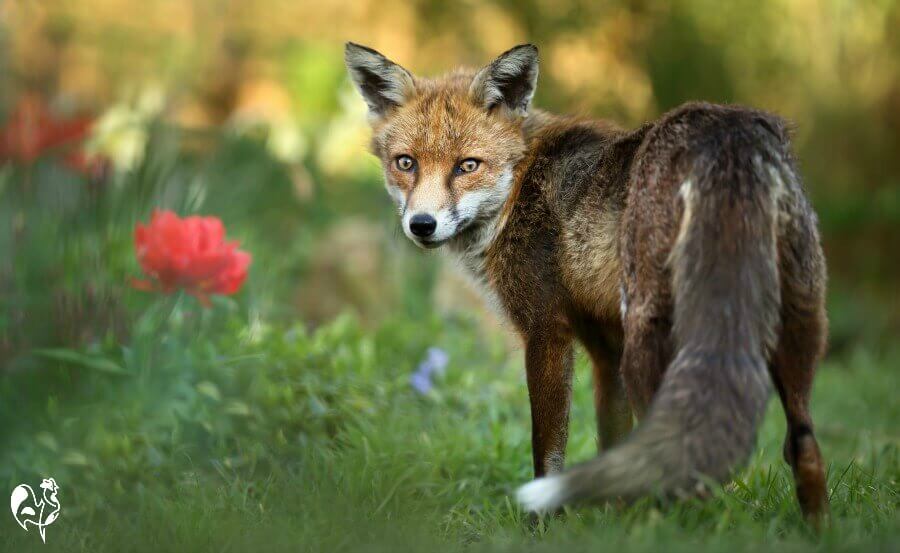
Sources.
1. When my chickens were killed, I relied on this book to teach me enough about the fox to help me protect my flock. I highly recommend it if you'd like to do some further reading.
Please note, this is an affiliate link which means if you click through and buy, I earn a small commission at no cost to you. I recommend this book only because I found it immensely helpful.
It's also available as a Kindle book.
2. This article is the go-to place for information about the red fox's senses. It's long and not an easy read, but worth it.
















